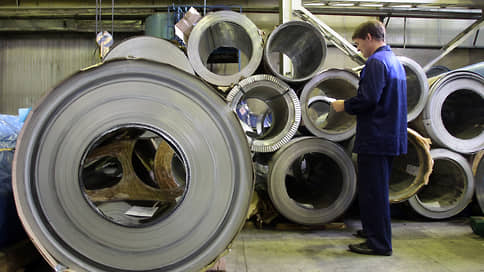The pacifier will be dragged through the courts – Newspaper Kommersant No. 241 (7442) of 12/27/2022
[ad_1]

The Supreme Court returned to consideration of the judicial practice around the old scheme, well known to the market, for transferring a business to a new structure and leaving an “empty” company to creditors. Lawyers note that difficulties in interpreting such cases may cause the need to carefully separate ordinary corporate actions from deliberate violation of the rights of creditors.
On December 23, the Supreme Court published a decision on the dispute over the subsidiary liability of the persons controlling the company (CDL), with whom contact had been lost by the time of its bankruptcy. The story began in November 2019, when Integrated Energy Solutions LLC (CER) collected 4.45 million rubles from Stalkraft LLC. Having not received the money, KER LLC filed for the bankruptcy of Steelcraft. But the court dismissed the case due to lack of funds from the debtor. The creditor demanded that the former owner and head of Stalcraft, brothers Andrei and Timofey Tretyakov, be brought to justice.
The CER explained that in September 2019, Stroymarket LLC became the second participant in Stalkraft LLC with a 20% share, and the director was also replaced. In October 2019, Andrey Tretyakov left the membership of Steelcraft, leaving Stroymarket as the sole owner. In parallel, in August 2019, the brothers created a new StalKraft Group LLC with the same type of activity (metal wholesale). In the opinion of the IEC, the defendants acted to the detriment of the interests of the creditors of the parent company.
The Moscow Arbitration Court rejected the claim for subsidiary liability, considering unproven the unreasonableness and bad faith of the actions of the defendants, who at the time of the initiation of the bankruptcy case of “Stalcraft” were no longer related to the company. The appeal and cassation upheld this decision. KER LLC applied to the Supreme Court. The creditor insisted that the courts had incorrectly distributed the burden of proof, which is why the brothers were exempted from the obligation to refute his arguments about the withdrawal of funds immediately after filing a claim for debt collection, transferring the business to another person, and so on. The case was referred to the Economic Collegium of the Armed Forces, which canceled all court decisions.
The Supreme Court explained that the former CDL could be held liable if the company’s inability to pay debts “is provoked by the implementation of the will of controlling persons, whose behavior did not meet the criteria of good faith and reasonableness and is not related to market or other objective factors.” Or if a member of an LLC or other CDL violated the principle of segregation of the property of a legal entity (for example, they used the company’s accounts for personal settlements), which “led to a mixture of their assets” and made it impossible to pay debts.
If CDLs ignore the rules of the corporation, then the principles of limited liability and protection of business decisions will also be “ignored” in their direction, the Sun noted. Unfair behavior can also include a business model that reduces the company’s assets and does not take into account its interests, for example, “transferring a business to a newly created legal entity in order to eliminate liability to counterparties,” admitted the Sun.
As a result, the panel sent the case back for a new trial, noting that the creditor had presented sufficiently convincing arguments, and the burden of refuting them was placed on the defendants. In addition, the courts must evaluate the defendants’ claims that the business model was cost-effective and based on their lending to the debtor to purchase goods.
“Transferring the debtor’s business to another company is a very common method,” in practice there is even a special expression “creating profit and loss centers,” says Dmitry Yakushev, attorney at Bankruptcy practice at Andrei Gorodissky and Partners. According to him, the judicial practice of recent years as a whole “successfully fights against such business models”, but they “still exist in one variation or another.” Since 2018, the re-registration of firms with debts at face value has become not such an attractive tool, since the courts often bring CDL to subsidiary liability, Ruslan Petruchak, adviser to the dispute resolution and bankruptcy practice of BGP Litigation, explains. “Persecution of beneficiaries, not nominees” is in the trend of judicial practice, confirms Svetlana Tarnopolskaya, partner of Yukov & Partners. In such a situation, the need to explain the scheme to the courts at the IC level in 2022 “causes concern,” adds Orchards adviser Vadim Borodkin.
The problem of such disputes is that the creation of a company with the same name as the debtor is not always aimed at causing harm to creditors, Mr. Yakushev notes. As a general rule, it is the creditor, as the plaintiff, who must convince the court of the illegality of the goal, the lawyer explains, but often his arguments “look like assumptions.” In this regard, lawyers note the importance of the fact that the Supreme Court placed on the brothers the burden of refuting the plaintiff’s arguments.
Svetlana Tarnopolskaya points out that two different principles of civil law collide here: ensuring the stability of the turnover and the inadmissibility of abuse by its participants. According to her, it is impossible always for the sake of the first principle to turn a blind eye to the violation of the second. In the Steelcraft case, Ms. Tarnopolskaya continues, the Supreme Court noted “the obvious suspiciousness of what is happening,” but did not draw a final conclusion, and now the lower courts will have to figure out how conscientiously the CDL acted.
[ad_2]
Source link





